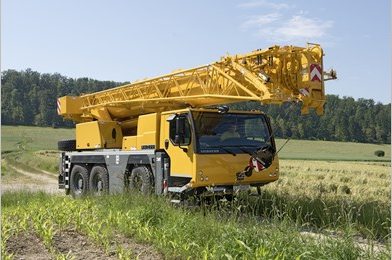 If you were to get into a time machine and travel back in time to ancient Egypt, you might witness the first known use of a crane. Some four thousand years ago, people invented a hand-operated device for lifting water called a “shaduf” (also spelled shadoof). A typical shaduf has a long, tapering, nearly horizontal pole mounted like a seesaw. People would use it to lift water to help irrigate the land nearby. In some countries, like Egypt and India, you’ll still find a version of the shaduf in use today.
If you were to get into a time machine and travel back in time to ancient Egypt, you might witness the first known use of a crane. Some four thousand years ago, people invented a hand-operated device for lifting water called a “shaduf” (also spelled shadoof). A typical shaduf has a long, tapering, nearly horizontal pole mounted like a seesaw. People would use it to lift water to help irrigate the land nearby. In some countries, like Egypt and India, you’ll still find a version of the shaduf in use today.
Nature’s Influence
In more modern times, the machines we know as cranes obtained their name from the species of bird we see as tall, slim and flexible. If you look at the long arm of a mechanical crane, it kind of looks like the neck of the crane bird!
Now back to olden days… besides ancient Egypt, you could travel back in time to ancient Greece, too. There you would see crane machines in use, powered by strong humans or, more likely, labor animals such as donkeys. Cranes became especially popular around the time when Greeks took to the sea in large numbers to go exploring– cranes would be used in the harbors to assist with the construction of boats, unloading cargo, etc.
Instead of using animals to power cranes, the 1800s saw the introduction of the steam engine which provided cranes with power.
Modern Robust Cranes
 Of course, today cranes are bigger and stronger than ever, right? When the 163-floor Burj Khalifa building, in Dubai, United Arab Emirates, was constructed between 2004 and 2009, the tower cranes (some reaching a height of 750 meters) reached their greatest extent in height, and then were automated to build the building and to carry on to rise high. And what about lifting weight? Well, the SSCV Thialf crane, in Rotterdam, is a semi-submersible crane vessel that, at one time, was the largest crane vessel in the world, lifting a weight of 14,200 metric tons, until the SSCV Sleipnir surpassed it in 2019. As you can imagine, designers continue to compete to build huge and powerful cranes.
Of course, today cranes are bigger and stronger than ever, right? When the 163-floor Burj Khalifa building, in Dubai, United Arab Emirates, was constructed between 2004 and 2009, the tower cranes (some reaching a height of 750 meters) reached their greatest extent in height, and then were automated to build the building and to carry on to rise high. And what about lifting weight? Well, the SSCV Thialf crane, in Rotterdam, is a semi-submersible crane vessel that, at one time, was the largest crane vessel in the world, lifting a weight of 14,200 metric tons, until the SSCV Sleipnir surpassed it in 2019. As you can imagine, designers continue to compete to build huge and powerful cranes.
Wooden Cranes
Isn’t it amazing to think back to the time “BC (Before Christ)” when primitive cranes made of wood were first used, and then look around today and marvel at how far humanity has come? People from centuries ago would be astounded to see the countless tall skyscrapers of New York, Boston, Philadelphia, and other cities today. And all of these tremendously tall buildings are made possible thanks to the use of cranes.
Steel Cranes
In the 1950s, steel was strong. Cranes were put on the back of trucks and that’s when “mobile cranes” were essentially invented. There are many types of cranes today, including tower cranes, truck-mounted cranes, mobile cranes, and rough terrain cranes.
If you ever wondered how many cranes exist these days, the number is somewhere around 200,000. A majority– 125,000–are used in the construction industry. General/maritime industries account for some 100,000 cranes or so.
In New England, Astro Crane rents over 20 hydraulic cranes ranging from 6 to 600 tons. You can see the fleet here. Astro Crane serves customers in Massachusetts, as well as New Hampshire, Vermont, Rhode Island, Connecticut and beyond. If you have any questions about cranes, call Astro Crane at 978-429-8666. Cranes are used on many construction projects and it’s highly likely that Astro Crane can rent you “the right crane” for the project you have in mind. Rather than buying an expensive crane which you’d have to maintain, store, etc., it makes sense to rent from Astro Crane for the time(s) you truly need the crane!

